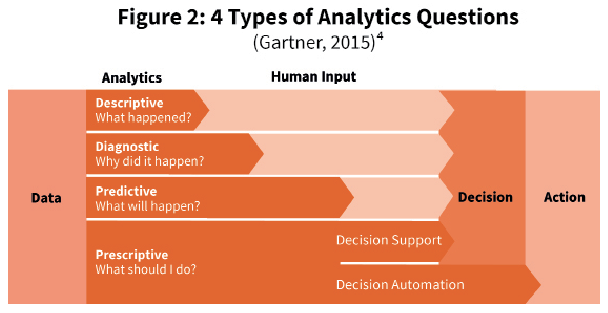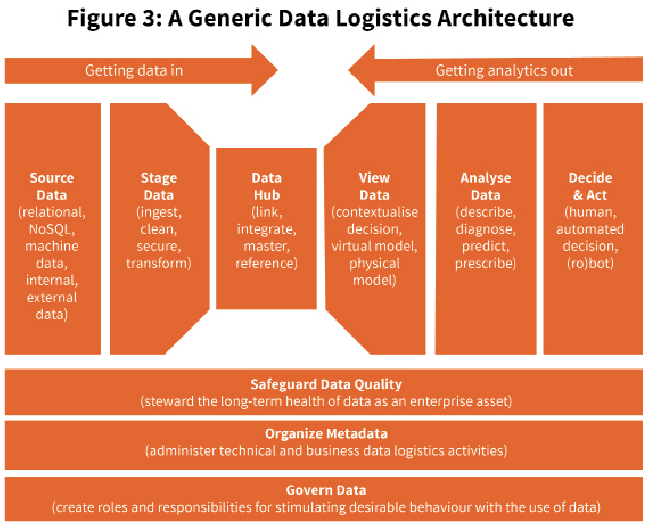By Stijn Viaene
In this article, Prof. Stijn Viaene continues to shed light on the realities that executives and business leaders must face in the digital era. In an era where customers are moving at the speed of the Internet, how does a digital leader catch them?
Digital leaders understand that being relevant once is not enough. They must remain relevant and appealing, at the speed of the Internet – the speed at which their customers are moving. They do this by deploying data capabilities broadly, effectively stapling themselves to their customer’s digital self. They bank on digital technologies to continuously monitor the environment, sense customer needs and track behaviour in real-time, and systematically run experiments to see what works and what doesn’t. They treat current value propositions as a set of critical assumptions to be continuously tested.
For such digitally attuned companies, the adoption of business analytics for decision-making comes naturally. Business analytics refers to the use of digital data technologies to enable applied analytical disciplines to drive data-driven business experimentation, business insights or decision-making. Analytics capabilities allow businesses to move from being product-oriented to being able to offer a continuation of valuable customer experiences. They enable digital frontrunners to be effective at treating customers as the moving targets that they are. Will you be a frontrunner?1
Targetting Reach and Richness
Thanks to modern business analytics, we finally seem to be able to blow up the trade-off between reach (i.e. convincing more customers with a particular information-based proposition) and richness (i.e. reigning in customers with a more complex, customised or personalised information-based proposition).
For a long time, the belief has been that you could not have both with information technology: the greater the reach, the less rich the information offering and customer engagement, and vice-versa. Thus, digital channels targetting a mass audience were restricted to providing simple products, with standard transactions, requiring “low-touch” engagement. More complex customised or personalised transactions, on the other hand, required face-to-face channels and decision-making based primarily on human engagement, possibly supported by customer relationship management tools.
Those days are over. Leading companies seek their competitive edge by using advanced analytics to break the trade-off between richness and reach.
For example, ING Bank has been profiling itself as a frontrunner in digital innovation in the financial sector. “When we launched ING Direct in 1997, we changed the banking landscape. We were the disruptive challengers then and we need to disrupt again today”, as per ING.2 With its Think Forward strategy – launched in 2014 – the bank wants to excel with a promise to be clear and easy, help customers make smart financial decisions anytime-anywhere, empower them, and keep getting better for customers. ING’s grand plan is to move its diverse set of country banking models into a single leading digital model that provides the best customer experience in each country.
Figure 1 illustrates how the ING Group intends to morph its two traditional banking model clusters in Europe – i.e. the branch-based models for high cross-buy (richness) and the direct models for simpler products and transactions only (reach) – into a single Direct First model with high cross-buy, effectively using digital to break the reach-richness trade-off.
ING bets big on using advanced business analytics to win based on propositions that combine richness and reach. This includes, for example, intensifying its use of robo-advisers in several countries.
[ms-protect-content id=”9932″]The Analytics Decision Spectrum
Data-driven business decision-making has become a competitive necessity. Thomas Davenport and D.J. Patil have certainly helped fuel business interest these last few years by announcing that “data scientists have the sexiest job of the 21st century”.4 Popularised by a new breed of gurus groomed by digital native companies such as Amazon, Google and Facebook, the emergence of this job title symbolises the next step in business analytics’ coming of age.
Talking about “data science” signals how scientists, technologists, engineers, and mathematicians (STEM) have joined forces with the data business to carve out their turf. Business analytics is now benchmarked against practices employed by highly skilled digital age professionals, who can make big money using scientific methods to mine the gold in complex data. Decision questions addressed by business analytics can be categorised in four types:
1. Descriptive analytics: What happened?
2. Diagnostic analytics: Why did it happen?
3. Predictive analytics: What is likely to happen?
4. Prescriptive analytics: What should I do?
This progression represents the increasing complexity of questioning entrusted to a machine. It stands for a growing digital aspiration, in the sense that the part of the decision process performed by a human decision-maker gets smaller as it is progressively replaced by machine intelligence. This evolution is depicted in Figure 2.
Decision automation is not science fiction. Robotic trading, for example, is already a major component of regulated equity markets: in 2012, Tabb Group estimated that it made up 51% of equity trades in the US and 39% in Europe.6 Today, decision automation is used in cars, factories, call centres, logistics (e.g. drones), surgery, etc. In the years to come, many jobs involving human decision-making are likely to be augmented, if not replaced, with machine intelligence.7 To keep up, companies will have to transfer a larger part of their decision-making processes from humans to more sophisticated machines. The popularised notion of “big data” expresses the need for investing in novel, cost-effective digital capabilities for handling high-volume, high-velocity and high-variety data.
Think Data Logistics
Too easily, business leaders are lured into believing that, because of their massive availability, data are not the problem. Experienced data scientists know better. For all of the excitement generated around the potential of data analytics to transform businesses, turning data into real business value is often no small beer. Clearly, there is more to this than just pushing and pulling data around. In positioning yourself to benefit most effectively from the wave of technological opportunities, thinking in terms of end-to-end data logistics is useful.
Effective data logistics implies creating a systematic, high-performing process architecture to gather data from a diverse set of sources, curate it for business analysis, and feed insights out into decision processes in ways that lead to desirable action. This process involves executing and coordinating a set of activities that collectively produce business value with an eye on progressive, long-term customer value delivery. Figure 3 provides a high-level, generic view of this data logistics architecture. This view allows you to treat data as an enterprise asset in its own right, managed to be broadly and conveniently used for creating customer and business value.
The good news is that, for each of the activities in Figure 3, new digital technologies are available for capturing the competitive data advantage (e.g. cloud technology, NoSQL databases, open source big data technology, visualisation, in-memory computing, machine learning, cognitive computing). These technologies allow you to do things faster, cheaper and better than before. The bad news is that there is no single technology capable of supporting the whole architecture or of dealing with every type of data or analytics job. Moreover, many of the big data technologies are continuing to evolve rapidly.
Unless you are a technology start-up, you probably also have some legacy data and analytics technologies. Luckily, in most cases, you won’t have to replace all that legacy at once. Many of these “older” technologies still have a lot of potential and possibilities. So, rather than thinking in terms of replacing your entire legacy data architecture, think about upgrading, selectively replacing and extending your legacy. Based on a firm understanding of your business strategy – reimagined for the digital age8 – map out your roadmap to adapt and mature your technology configuration in stages. You will need information systems architecture and integration skills to implement this technology strategy properly.
Exploration and Exploitation Logistics
Whilst there are many possible data logistics configurations, it makes sense to think differently about these logistics for exploration and exploitation purposes. Exploration environments should allow one to travel through unfamiliar areas in order to learn about them and discover new insights and opportunities. Exploitation environments aim to make full use of the insights and benefits derived from a data resource and capture the value from opportunities. For sure, big data technology expands the exploration possibilities in the digital world. But many of the technologies are equally useful in exploitation settings. Ultimately, exploration is not a product or a technology – it’s a data logistics process.
The two environments carry distinctly different requirements:
Exploration’s use of data is characterised by freedom, openness, trial and error, generativity, ad-hoc activity, non-standard behaviour, bricolage. You will want to play around with the latest beta versions of an algorithm. You’ll get your hands dirty with open source and want to share freely with colleagues and academics.
Exploitation’s use of data, however, is characterised by more control, mediated access, productivity, scale, agreed service levels, standardisation, industrial quality.
And each environment comes with different data quality, meta-data and data governance considerations. Leading companies manage to have effective data logistics for exploration and for exploitation. Most importantly, however, they are also capable of smoothly transitioning initiatives from the lighter-weight governance necessary for exploration to the heavier-weight governance of the exploitation environment. To do so, however, requires excellent business-IT alignment skills spanning both environments.
Data Science is a Team Sport
When customers are moving at the speed of the Internet, customer experience creation and design thinking cannot do without advanced business analytics – which allows for more frequent and faster iterations between the design and operating environments, enabling business experimentation at a proper velocity. But, according to Digvijay Lamba, tech entrepreneur and former distinguished architect at Walmart Labs, there is a real issue with data science in practice:9
“What’s happening is [that] there are domain experts – buyers, merchandisers, product managers and others [who] have worked in retail for years and years – these people know the market really well … They throw these ideas over the wall to data scientists, who go through the data and come up with these brilliant ideas to answer questions. But there is a wall there. The data scientists are not domain experts … What we want to do is break down the walls.”
Multiple “data scientist” definitions circulate. Many of them paint an idealistic picture of a person with the curiosity to answer higher-order business questions combining STEM skills, hacking, data storytelling and business skills. Rarely, however, are data scientists domain experts.10
We need to connect the world of data scientists to the world of domain experts. Data science exercises aren’t about just publishing insights; they’re about producing working solutions in the business domain. To generate real business impact, we need to combine a whole set of skills, including business and data modelling, data discovery, decision operationalisation and cultivation skills. In addition, we need a robust data logistics platform to stand on. Traditionally, little, if any, attention has been paid to supporting team collaboration with these platforms. This must be revisited: while your data logistics platform must provide data logistics support, it also needs to support conversation management in and across business analytics projects.
In the end, your data logistics platform should form the basis for an enterprise business analytics capability. It should stimulate business productivity by opening up the world of data and analytics to the entire business community, and by making it convenient for internal and external partners to connect, collaborate and innovate with data. It should offer robust support for running value-adding business analytics projects and making sure that every project progressively contributes to collective learning.
Business Analytics Project Success
Applying design thinking significantly increases the chances of successfully managing business analytics projects for customer innovation. Its principles have been described in a previous article in The European Business Review.11 Our research on business analytics project success has revealed a number of critical success factors:12
Start with the ends in mind. Business analytics or data science projects are often characterised by uncertain or changing requirements. That makes managing goals, scope and expectations particularly challenging. But remember: although you might be in discovery mode, you are also on a timeline to deliver business impact. Business analytics projects are not IT projects, nor pure data experiments. They are business projects, targetting customer and business ends. So, try to be clear about what you hope to achieve at the outset. Clarify the customer and business impact you aspire to, and then think about how you can most efficiently achieve that goal with data analytics – minimally, as with a minimum viable product.
Plan, but plan for change. It’s important to plan for desirability, feasibility and viability of the project before you get going. But don’t overdo it. Have an execution bias, rather than a planning bias: start with the assumption that the initial plan will have to change as the project progresses through iterations of validated learning. Aim for showing value in use with data and analytics early and often, and continuously capture the value of learning. Don’t assume –check your hypotheses by using your data and analytics, and progressively create data and business insights.
Take a holistic stance towards benefits realisation.
Do you have representation from both the business and IT in your projects? Do you have business and data modelling, data discovery, decision operationalisation and cultivation skills seamlessly working together as a team all through the project’s life? Where are the data logistics people helping you to transition from exploration to exploitation (and back)? Your project teams must be able to manage the combination of customer desirability, operational feasibility and business viability all along the project’s life.
Work to gain stakeholder commitment. Engage business stakeholders and customers as early as possible, and then throughout the project. Clarify expectations from the outset, and manage them throughout. By continually explaining, engaging and managing expectation clarity, you will gain trust in the decision support provided by your business analytics. The lack of trust in automated decision-making remains a show stopper in substituting human decision-making by business analytics – especially when using artificial intelligence “black boxes”. Still, working on the digital edge, the black boxes will be unavoidable. That means you’ll have to work to develop trust in, and gain adoption of, these solutions. Actively coaching the stakeholders into cultural change is crucial.
Develop an enterprise capability project by project. Every business analytics project should be able to capitalise on the data products, insights, and lessons learned from previous projects, and serve as a springboard for the next ones. An enterprise business analytics capability is developed over time – project by project. Ideally, every project’s business case includes objectives for short-term business return as well as for long-term business analytics capability development. Securing the long-term value of your data and analytics capabilities – your platform – requires involving enterprise and other architects in the design and use of data and analytics assets.
Conclusion
Digital leaders strive to keep up with the customer’s digital self. They want to capture this moving target effectively. They understand that the use of digital technologies allows for forms of customer co-creation that cannot possibly be achieved with just human observation or design. This requires growing data and analytics prowess as an enterprise. Data scientists alone are not enough. Business and IT have to join forces in creating an enterprise that thrives on smart data decisions. But don’t underestimate the data logistics challenge. Project by project, you will have to grow your enterprise’s analytics capability to explore and exploit opportunities more quickly than your competitors.
[/ms-protect-content]About the Author
 Stijn Viaene is a Full Professor and Partner at Vlerick Business School in Belgium. He is the Director of the school’s Digital Transformation strategic focus area. He is also a Professor in the Decision Sciences and Information Management Department at KU Leuven.
Stijn Viaene is a Full Professor and Partner at Vlerick Business School in Belgium. He is the Director of the school’s Digital Transformation strategic focus area. He is also a Professor in the Decision Sciences and Information Management Department at KU Leuven.
References
1. Understanding the four realities driving competition in the digital age was considered a mandatory starting point for any successful digital transformation in Viaene, S. (2017). Rethinking Strategy for the Digital Age: An Executive Primer. The European Business Review, July-August. In this article we elaborate on the second reality: customers are moving targets.
2. ING Group (2014). Annual Report ING Group N.V.. Source: https://www.ing.com/About-us/Annual-reporting-suite/Annual-Reports-archive.htm
3. Haemers, R. (2016). Accelerating Think Forward (ING Group Investor Day). October 3, Amsterdam (The Netherlands).
4. Davenport, T.H. & Patil, D.J. (2012). Data Scientist: The Sexiest Job of the 21st Century. Harvard Business Review, October.
5. Kart, L., Linden, A. & Schulte, W.R. (2013). Extend Your Portfolio of Analytics Capabilities. Gartner (ID: G00254653). September 23.
6. World Federation of Exchanges (2013). Understanding High Frequency Trading. May 29.
7. See, for example, Stylianou, N. et al. (2015). Will a Robot Take Your Job? BBC News – Technology. September 11. Source: http://www.bbc.com/news/technology-34066941
8. See Viaene, S. (2017). Rethinking Strategy for the Digital Age: An Executive Primer. The European Business Review, July-August.
9. Boucher Fergusson, R. (2012). It’s All About the Platform: What Walmart and Google Have in Common. MIT Sloan Management Review. December 5.
10. Viaene, S. (2013). Data Scientists Aren’t Domain Experts. IEEE IT Professional. 15(6).
11. Viaene, S. (2017). Digital Reality No1: Customer Experience is Value. The European Business Review, September-October.
12. Based on Viaene, S. & Van den Bunder, A. (2011). Secrets to Managing Business Analytics Projects. MIT Sloan Management Review. 53(1)





































